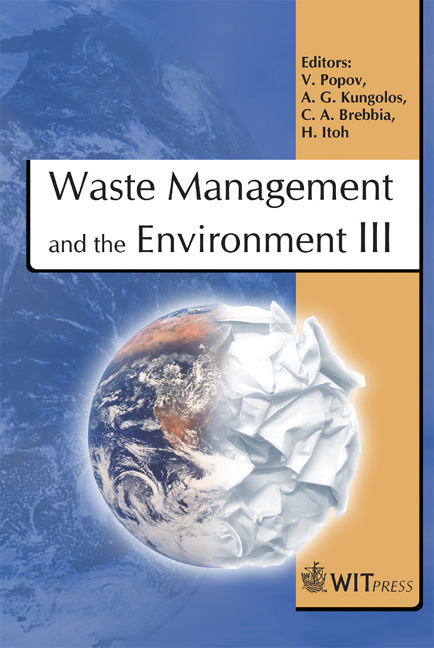Metal Content And Recovery Of MSWI Bottom Ash In Amsterdam
Price
Free (open access)
Transaction
Volume
92
Pages
6
Published
2006
Size
328 kb
Paper DOI
10.2495/WM060231
Copyright
WIT Press
Author(s)
L. Muchová & P. C. Rem
Abstract
Incineration reduces the mass of municipal solid waste (MSW) by 70% to 80%, and it reduces the volume by 90%. The resulting fractions of the incineration are bottom ash, fly ash and flue gas residue. Bottom ash is by far the largest residue fraction. About 1.1 million tons of bottom ash are produced in the Netherlands and about 20 million tons in Europe, every year. The production of bottom ash is rising because MSW is increasingly incinerated. Bottom ash is land filled in many European countries. However, the material is suitable as a building material from a civil engineering viewpoint, e.g. for embankments and foundations of roads. Bottom ash contains a considerable amount of non-ferrous and ferrous metals that should be removed for such an application. The recovery of these metals improves the engineering and environmental properties of the ash, and creates a financial benefit. Conventional dry physical methods recover only a small part of the metal value from the ash. This study gives a mass balance for the metal recovery plant of the Amsterdam incinerator (AEB). The results are based on research experiments performed in a new pilot plant for the wet physical separation of bottom ash. The recovery of ferrous and non-ferrous metals is above 70%. The metals that are found in the ash pay for a substantial part of the separation process. Keywords: bottom ash, metal content, physical separation. 1 Introduction Bottom ash from the incineration of household waste is usually treated by magnetic and eddy current separation (for the coarse particle fraction) or it is not treated at all. Therefore, this type of bottom ash represents a large potential for
Keywords
bottom ash, metal content, physical separation.





